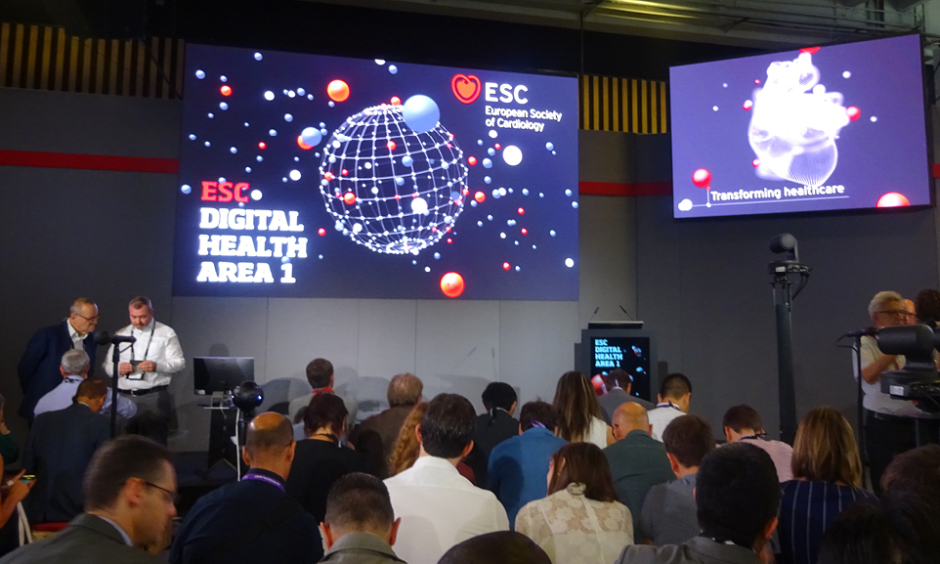Written by Michael Dodsworth | Editorial Administrator, European Medical Journal![]()
An acceptance has slowly emerged within the healthcare community that limitations exist in its ability to efficiently, and most importantly sustainably, deliver effective therapies to patients who need them. These challenges are often complex and multifactorial in nature, arising from factors such as an ageing population, increased prevalence of chronic diseases, financial pressures on healthcare systems, and a demand for better patient engagement. Not one to shy away from these unique obstacles, the healthcare community have instead opted to look outward to the digital technology sector in order to harness the brilliant potential it presents, helping provide a patient-centric and efficient service. The result is a partnership that has taken the clinical community, and indeed general population, by storm.
Digital health encompasses the use of information and communication technologies to conduct research, inform healthcare professionals, treat patients, track diseases, and monitor public health. This can be through a variety of means, including, but not limited to:
- Telemedicine and telecare: the provision of services such as remote patient monitoring and homecare.
- Big data: the acquisition and analysis of large, heterogenous sets of data. This can allow the delineation of important environmental and social factors that can impact on public health.
- Mobile health: the use of mobile technologies to provide information and facilitate decision making on a population level.
- Personalised health: Implantable or wearable nanotechnologies that can monitor health in real-time (e.g., fall detectors, insulin pumps).
These examples show just some of the ways in which digital innovation has, or can, change the way in which healthcare can be facilitated: a diverse selection of approaches to meet an equally diverse selection of challenges. Expanding rapidly since its introduction, digital health has become the third largest industry in the European health sector, following pharmaceuticals and medical devices.1 The European Society of Cardiology (ESC), as one of the largest representative bodies of cardiologists in the world, has understandably given increased attention to digital health as a means to provide support to its various members in their daily practice, be it clinical, research-focussed, or legislative.
An ESC working group has recently published a position paper on the society’s stance on digital health.2 In the paper, the group identify how the treatments employed to tackle cardiovascular disease, whilst available and guidance-based, often offer disappointing long-term benefits due to reasons such as non-adherence. Cardiac telerehabilitation and other types of monitoring are proposed to allow the opportunity for practitioners in the field to redesign and improve care and diagnosis for these patients.
Heart failure is an ideal example of a cardiovascular pathology benefiting from this digital revolution. Heart failure is a chronic condition often requiring patients to modify their lifestyle habits and behaviours in order to best optimise their recovery and improve life-quality. Invasive telemonitoring could potentially be used to report on the progression of heart failure in real time, be it worsening or improving, and better inform healthcare professionals of important decisions to be made regarding the patient’s ongoing treatment. The monitoring has an added benefit of giving the patient comprehensive and personalised information, enabling them to play a more active role in the management of their condition. Contrary to invasive intervention, a recent meta-analysis on noninvasive telemonitoring was able to show that structured telephone support reduced all-cause mortality and heart failure-related hospitalisations compared to standard of care,3 suggesting different applications for digital technology in heart failure. Other examples of digital technology application in the field include means for primary prevention of cardiovascular disease (home blood pressure monitoring for controlling hypertension)4 or secondary prevention of ischaemic heart disease (noninvasive telemonitoring for arrhythmia detection).5
Prof Martin Cowie, Professor of Cardiology, National Health and Lung Institute, Imperial College London, London, UK, is optimistic about the possibilities that digital health allows: “Digital Health is disrupting the usual way patients and healthcare professionals interact. It could potentially transform healthcare so that care is delivered more remotely, and patients can access advice from wherever they are, rather than having to physically attend a hospital or office facility.”
It would be naïve to assume that the possibilities digital health allow are not accompanied by certain disadvantages. Ethical, legal, and data protection constraints can hamper the digital innovation of cardiovascular healthcare, as well as aversion by practitioners themselves; often the use of certain technologies can be seen as forced or in search of a problem that doesn’t exist, and evidence for their effectiveness can be circumstantial at best, and lacking in robustness at worst. The difficulties that regulatory bodies have in reacting quickly to the ‘disruption’ that digital innovation brings is an ongoing challenge, but one that most parties involved would agree is a challenge worth facing.
“The clinical community has quite a high bar. If we want to use a new drug, or a new device, we want really strong evidence: we want this also for electronic technologies,” chimed Prof Cowie. “Some of these are no-brainers like electronic prescribing; you don’t need to do a trial to show that’s good […] but for some of the other things that are interfering in work flow and changing the data we are looking at, you really do have to show that that makes a meaningful difference.”
The adoption of digital technology across the cardiovascular field, and indeed all disciplines of healthcare, is clearly not a straightforward process. Undeniable benefits are often accompanied by constraints, and the cardiovascular community are still trying to determine the best application of the tools available to them. However, the innovation of ideas, technologies, and practice is of the utmost importance in the digital era in which we live today. The global burden of cardiovascular disease is being met with a new arsenal of weapons for its management, surely a promising sign for years to come.








